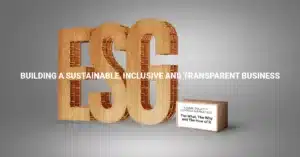The Indian millennials are an interesting bunch. At a point of a generational shift in ideology where they’re going from prioritizing function over fashion (or more like, making function as fashion), the millennials are continually driving certain sectors towards unseen growth.
These sectors range from service provision to household items, and often result in the millennials adding to the country’s rental economy or using cheaper alternatives to existing models of the included commodities. This is a generation which doesn’t attach any emotional values to the commodities it owns.
For example, let’s look at the commuting habits of millennials. If we ask ourselves as to how they prefer to commute daily, there are plenty of follow-up questions to it such as: Do they prefer using their own cars? If so, what kind of cars do they like? Do they opt for public transport instead? Or are they okay with the good ol’ fashioned carpooling techniques?
The answer is a little bit of something but not a whole lot of one. Instead, the changing habits and environmental awareness is driving the Indian youth demographic to switch to vehicles which give them the best of both worlds: function and efficiency. And this efficiency doesn’t just refer to the fuel mileage, but vehicular maintenance, cost-effectiveness, longevity of the vehicle and its carbon footprint.
Taking the last factor of carbon footprint into account where the goal is its reduction, that’s where we see a stark difference in preference. The Indian millennial would rather switch to an electric vehicle (or an e-vehicle, so to say) as compared to a conventional petrol/diesel powered vehicle, as a measure to save costs and contribute to environmental protection. The decision not only makes sense but also is more than welcome, considering the WHO Report in 2018 which highlighted that 14 of the world’s 20 most polluted cities are in India.
Therefore, the need to contribute to environmental protection via e-vehicles comes as a breath of fresh air, pun intended. The rising pollution levels in the country, especially in metro cities such as Delhi and the will to change for the better has allowed this generation to stem away from the idea of associating vehicles with luxury and status. They know, acknowledge and are willing to work in a manner which doesn’t contribute to the adverse effects of climate change and this sort of empathetic ideology hasn’t been seen in the past, which is good for the country’s overall progression.
As for the government, considering it is set to launch the FAME-II scheme and with ambitious projections to turn the entire country towards using e-vehicles by 100% in 2030, the timing couldn’t have been better. If the country manages to achieve its intended target by 2030, it’ll be a massive step in the right direction, and we’ll be able to reduce over 1 gigaton of carbon dioxide emissions, as per a 2017 Study by FICCI – Rocky Mountain Institute.
Sure, there are infrastructural challenges and there’s no denial in addressing that. But the whole point of the introduction of e-vehicles was keeping in mind the challenge/consequences of over-consumption of fossil fuel resources and environmental degradation. The Government itself has targeted the urban Indian millennials with its plan for e-vehicles and the Gen-Z as well, by notifying certain specifications for the grant of license to the age group of 16-18 years to drive gearless e-scooters/e-bikes up to 4.0 KW, as highlighted in one of the recent speeches of Shri Nitin Gadkari, the Minster Of Road Transport and Highways for the Government of India.
The trends are further indicating a shift, not just in terms of switching to e-vehicles from conventional petrol/diesel vehicles but choosing which type of e-vehicle to go for. With the sale of over 56,000 e-vehicles in FY 2017-18 as compared to 25,000 in FY 2016-171, a contrast can be seen in the sale of electric 2-wheelers and electric 4-wheelers.
Although the numbers do show growth and emerging prospects, the category of that growth needs analysis. From the 56,000 sold, a total of over 54,800 are electric 2-wheelers and just 1200 are 4-wheelers. Similarly, from FY 2016-17, out of the 25,000 plus sold, the segregation is 23,000 2-wheelers and 2,000 4-wheelers.
This indicates that the trend is shifting not just to e-vehicles, but to simpler (and cheaper) types of vehicles.
From the perspective of automotive manufacturers, this presents immense opportunity in a sector which is waiting to be capitalized and guarantees inevitable growth in the future. With Indian companies like Gayam Motor Works (GMW) already using e-vehicles for last mile delivery (in partnership with Flipkart/IKEA), the sector presents excellent opportunities for foreign companies to enter the Indian market.
Several automobile companies in India have started testing e-variants after the launch and usage of cars such as the Toyota Prius Hybrid and the BMW i8. This presents an opportunity for foreign auto-component companies to effectively set up in India to manufacture lithium-ion batteries, a commodity which is pivotal for e-vehicles and which is projected to be sold at USD 100 in the next few years to support cost-effective e-vehicles.
With the presence of Japanese automotive firm Terra motors already selling e-rickshaws since 2014 in India, there has also been interest from Taiwan to enter the Indian e-vehicles market (as reported by Business Standard), since the Taiwan External Trade Development Council (TAITRA) signed an agreement with Society Of Manufacturers of E-Vehicles (SMEV) to develop e-vehicles via mutual knowledge/technology sharing. Further interest in Indian EV market has been reported from the Kwang Yang Motor Company from Korea, which happens to be the world’s 5th largest scooter manufacturer (as reported by Business Standard).
Added to that, interest in the EV sector from China is a bonus (as China is the world’s leading EV producer) and with China EV100 looking at potential opportunities in India, one can expect to see a rise not just in 2-wheeler EV vehicles but other variants, too.
With opportunities galore, the rising need (pollution), a dramatic shift in ideology and a much-needed Government initiative, the e-vehicles market in India is projected to witness phenomenal growth over the next 5-10 years. And now would be the right time to make a move towards a future which lets us breathe fresh air.
–
Written by
Sahib Singh, in collaboration with the Coinmen Research Team










